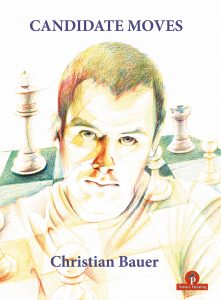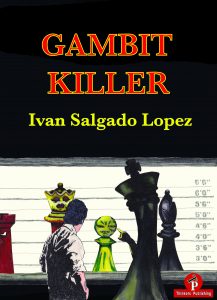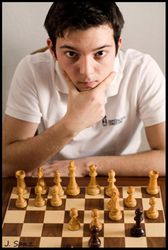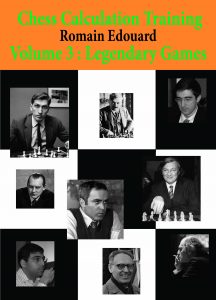
Christian Bauer (born 11 January 1977) is a French Grandmaster and author. He is a three-time French Champion and the author of three opening books. This collection of the authors best games is his first book for Thinkers Press.

What makes this book unique is that each game is annotated twice, firstly from the perspective of the white player followed by the same game with the annotations this time from the black player. The book contains 38 very deeply annotated games from the perspective of both players played between 2007 and 2017.
The book is divided up into four chapters : chapter 1 covers the topic of the exchange sacrifice, chapter 2 covers tactically complex positions, chapter 3 covers games where one king remains in the centre, and finally, chapter 4 covers “quieter games”.
This a very well produced book. Recently I have had the pleasure of reviewing two other books from Thinkers Publishing and, as with this book I have been impressed with the high quality of the publication. But, the book does not come with an index of games or a list of openings. My first criticism of this book is the title “Candidate moves” : when you start to read this book you would assume that the book is going to discuss the selection of candidate moves, but the book doesn’t do that, in fact I would go as far as saying that the title bears no relation to the contents whatsoever. Does this mean that this is not a good book? Far from it, there are many interesting and hard fought games here and the standard of annotation is consistently high throughout. I did however notice a number of inconsistencies with the annotations where for example a move is considered bad or dubious in one ‘version’ but is passed over without comment when annotated from the other players perspective.
The author does like to side step mainstream opening theory and play offbeat or even unsound openings, e.g. In Chapter 4, Game 17 against R Wojtaszek (2724) the game begins 1d4 a6 and in Game27 against D Semcesen (2469) starts 1. c4 e5 2.a3!? and the rationale was that as his opponent likes to play the line 2Nc3 Bb4 against the English opening he thought that he would see if opponent would be bothered by 2. a3. These are games from classical tournaments played by a top ranking chess professional, not games from a blitz or rapidplay event. Could you play like that?
The double annotation method was to try and diminish the subjectivity in the annotations and is a unique and innovative approach. I have seen the idea of multiple perspectives work in films but I don’t think that it really works here. I did enjoy playing through several of the games in the book and I may even try out some of the opening ideas myself but overall I don’t think that the idea works. You can achieve the same result by including all the annotations within one game.
Tony Williams, December 8th 2018

Book Details :
- Paperback : 404 pages
- Publisher : Thinkers Publishing (7 Sept. 2018)
- Language : English
- ISBN-10 : 9492510243
- ISBN-13 : 978-9492510242
- Product Dimensions : 17 x 1.5 x 23.4 cm
Official web site of Thinkers Publishing






